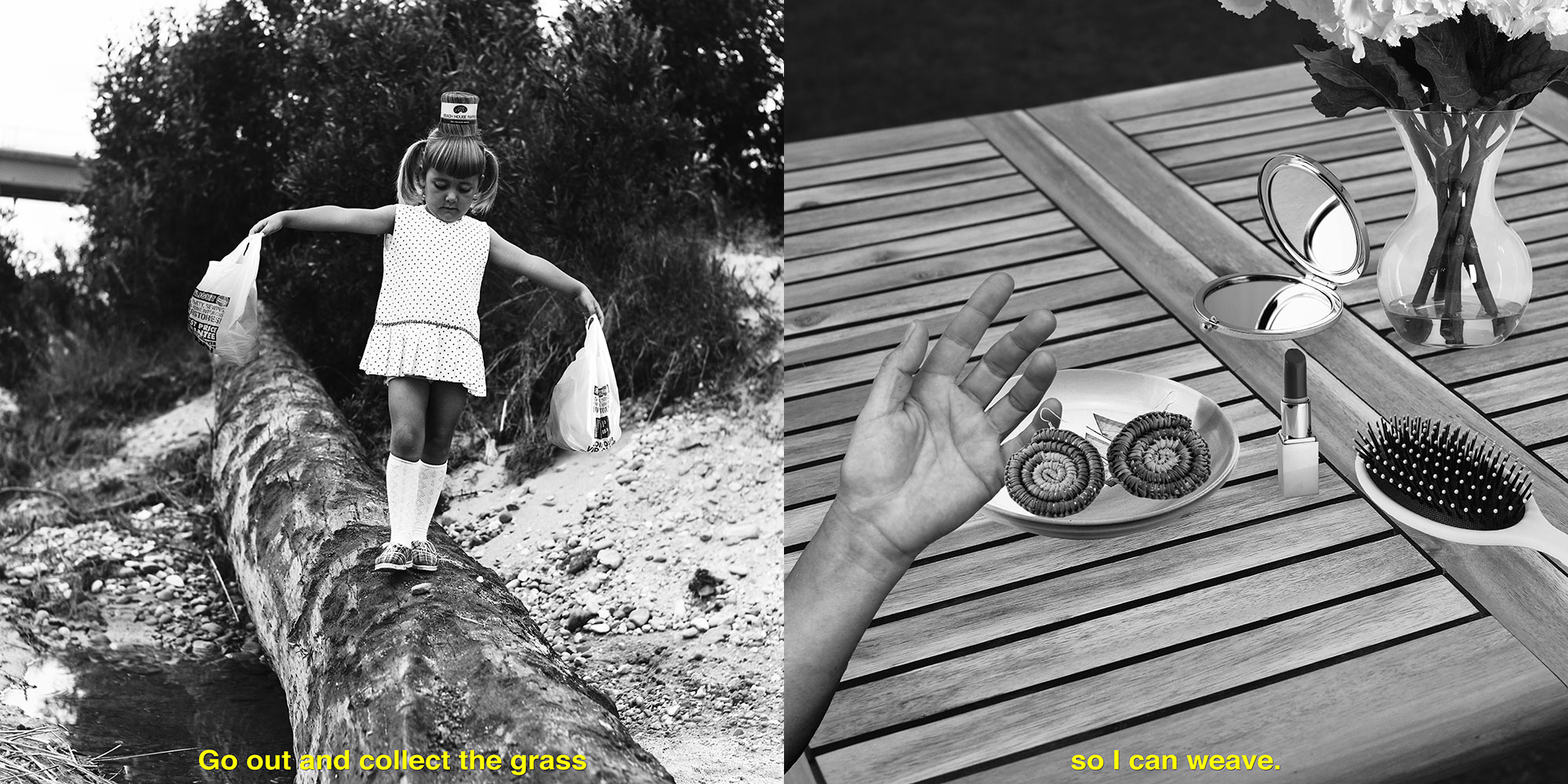Learning Experience 3
Cook Book, 2017–19
Untitled (Go out and collect the grass so I can weave) Part 1 (Cook Book), 55 × 55 cm, inkjet on cotton rag, 2017–19
Untitled (Go out and collect the grass so I can weave) Part 2 (Cook Book), 55 × 55 cm, inkjet on cotton rag, 2017–19
‘As Aboriginal people, we have passed down stories to the next generation for hundreds of centuries in order to preserve timeless knowledge and our way of life – even through the onslaught of change that invasion and forced assimilation brought with it.’
– Hayley Millar Baker, artist statement
What stories, cultural memories, knowledge, practices, skills or objects have been passed on to you from family members? How do these reflect change or resilience?
Consider how you would actively adapt or change your cultural, educational, artistic or religious practices to ensure their continuity in future generations. Express your projected future in a form that reflects your area of study, research, knowledge or expertise (i.e., through writing, animation, design, drawing, etc.)
Millar Baker’s 2017–19 series Cook Book merges traditional Aboriginal cultural practices with contemporary Western knowledge and tools. Within First Nations cultures, stories have been passed down to the next generation for thousands of years to ensure the continuity and preservation of timeless forms of knowledge and ways of life.
Within a contemporary context, Aboriginal cultural practices that respond to natural environments (such as hunting, cooking, making and building) have extended to incorporate Western technologies and tools to adapt to a fast-paced and ever-changing environment.
Through an interplay of text and imagery, Cook Book invites us to consider how Western implements have become part of contemporary day-to-day First Nations cultural practices and activities.
Can cultural, familial or religious practices continue without adapting or changing?
